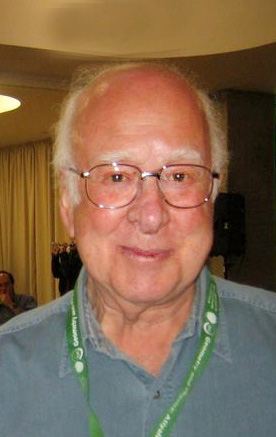Representatives of the World W.I.S.E Resource Center encouraged students to appreciate each other’s differences through an interactive photo display this week.
The World W.I.S.E Resource center, in collaboration with their ambassadors program, is challenging students to reconsider misleading stereotypes surrounding religious, cultural and personal differences. The students who devised the display are hoping to fuel discourse between student communities on campus.
The project coincides with World W.I.S.E Resource Centre’s Day for Cultural Awareness on Nov. 2.
The underlying principle behind “What I Wear on my Head” is emphasizing that what an individual chooses to wear does not necessarily define them as a person.
“We thought it would be cool if we could [ . . . ] try to show people that what they hear on the news and what they get from the media is not always the most true or honest perspective,” said Bilan Arte, a World W.I.S.E. ambassador and one of the main organizers of the project.
The motivation behind the project came from the introduction of legislation by Quebec Premier Jean Charest that would ban Muslim women from wearing the niqab, a face veil that allows only their eyes to be visible. The draft law, Bill 94, effectively denies niqab-wearing women from receiving or delivering public services, including health care and education.
Bill 94 was created as a guideline for accommodation requests within the administration and certain institutions. Although the bill does not explicitly make reference to the niqab, it states that a person to whom services are being provided must “show their face during the delivery of [government] services,” and will be denied accommodation “if reasons of security, communication, or identification warrant it.”
“Why are we freaking out about a piece of cloth?” said Rayannah Kroeker, World W.I.S.E Resource Center coordinator.
“We attach all this huge baggage to it without checking if it is remotely true,” she continued.
The display will be set up in the Engineering Atrium as part of World Opportunities Week from Nov. 2-4, and will include a projection, life-size pictures and personal statements as well as a comment box. Comments will be anonymously posted on the screen throughout the day.
Kroeker said that by taking pictures of students on campus, other students will be encouraged to think outside the box.
“The point of the project is to bring the human back into these images and remind people that it’s just a human being and that’s what they want to wear,” she said.
Arte also mentioned that, often, stereotyped groups do not have the voice they deserve.
“People end up speaking on behalf of others,” she said.
“We feel it should be people who are wearing whatever it is they are wearing that should be talking about their own experiences.”
Katherine Davis, a World W.I.S.E ambassador and organizer of the project, explained that the project was attempting to be as neutrally as possible.
“We’re trying to produce discussion, and if people [ . . . ] have some thoughts we want to put them out there,” she said.
The bill has been backed by arguments based on gender equality, secularism and the reinstating of Quebec’s values.
Arte believes that these arguments are weak and essentially discriminatory, especially considering the small number of women who wear the niqab.
“Since when do majorities vote on minority rights? Especially if you take into account that there have been no meaningful efforts made to talk to these women or to understand them,” said Arte.
Kroeker noted that there are less than 100 women in Quebec who wear the niqab, making the motives behind the bill suspicious. Kroeker said the legislation raises a lot of questions, including concerns of Islamophobia.
“The reaction towards these women is more oppressive than a niqab could ever be,” she continued.
“Just the amount of effort it takes to actually pass legislation involves so much time and money; I can’t believe that this has actually gone through so many stages,” said Davis.
Organizers of the project feel that more respectful discourse surrounding such issues is needed on campus and in Canadian society in order to further understanding.
“If we associate this entire image with someone who wears a piece of cloth then what do we associate everyday with people we pass in the hall?” said Kroeker,
“The way I think this relates to all Canadians is that from a basic democratic point of view it’s not democratic,” she said. Davis said that she hope the project will also cause people to reflect on their freedoms as Canadians and to remember not to take them for granted.
The organizers are looking forward to seeing people’s reaction to the display and are hoping for some strong feedback.
More information can be found on Facebook.com under the “What I Wear on my Head” event by the World W.I.S.E Resource Center.




